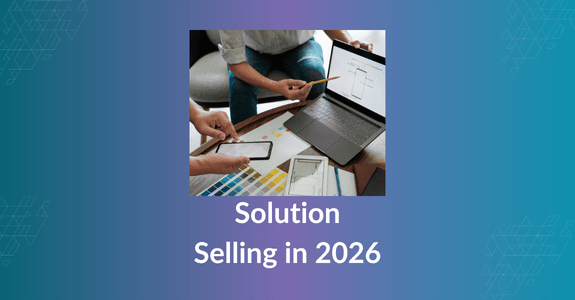Solution Selling in 2026
by Mentor Group

This supporting article examines Solution Selling—how it works today, where it excels, where it can stall, and how to deploy it within a blended go-to-market alongside Consultative, Challenger, SPIN, MEDDIC and INFINITE motions.
Read the pillar article for full context.
What is Solution Selling?
Solution Selling is a structured approach that reframes the conversation from product features to business outcomes. Sellers diagnose underlying problems, map stakeholders and constraints, and design a solution architecture that ties to measurable results.
Why it Matters in 2026
Modern buying is non-linear and multi-threaded. The value of Solution Selling lies in moving from problem identification to outcome design, coordinating the right experts, partners, and proof points to reduce buyer risk and accelerate consensus.
Core Activities
- Diagnose current state and desired outcomes
- Map stakeholders, constraints, and success criteria
- Co-design the solution and value hypothesis
- Validate with relevant proof (cases, benchmarks, pilots)
- Orchestrate delivery plan and mutual action plan
Strengths
- Focuses stakeholders on outcomes over features
- Creates a blueprint buyers can socialise internally
- Scales with playbooks across similar use cases
- Reduces price pressure by making value explicit
Weaknesses / Risks
- Can default to templated ‘one-size-fits-all’ solutions if discovery is shallow
- May slow cycles if validation steps are excessive or poorly sequenced
- Risks over-engineering when the buyer needs a simpler motion
- Requires tight handoffs to delivery for credibility and realised value
Best-Fit Use Cases
- Multi-stakeholder initiatives with clear pains and measurable outcomes
- Situations requiring integration across products, services, and partners
- Deals where internal consensus depends on a concrete execution plan
- Customers requesting evidence of impact before executive sign-off
How It Blends with Other Methodologies
Pair Solution Selling with Consultative discovery to earn trust, leverage Challenger to reframe assumptions with credible insight, use SPIN/MEDDIC to maintain discipline, and use INFINITE to keep momentum across digital and human touchpoints.
Implementation Checklist (2026)
- Write a crisp problem/outcome statement co-authored with the buyer
- Build a value hypothesis with metrics and timeframe
- Select right-sized validation (reference, demo, pilot, or model)
- Define a mutual action plan with responsibilities and dates
- Close the loop: tie delivery milestones to promised outcomes
Key Metrics
- Win rate and sales cycle length for solution-led deals
- Executive sponsorship attained by stage
- Value hypothesis acceptance and pilot-to-production conversion
- Realised value vs. proposed value at 90/180 days
Frequently Asked Questions
Q1. When should I use Solution Selling instead of a product-led motion?
A1. Use Solution Selling when complexity, risk, and cross-functional impact are high, outcomes must be quantified, and buyers need a credible execution path.
Q2. How does Solution Selling differ from Consultative Selling?
A2. Consultative builds trust and understanding; Solution Selling adds a co-designed architecture and execution plan that ties to measurable outcomes.
Q3. What are common pitfalls in Solution Selling?
A3. Treating every deal like a transformation, over-validating, skipping stakeholder mapping, or failing to connect delivery milestones to the business case.
Q4. Which metrics prove Solution Selling is working?
A4. Higher acceptance of value hypotheses, improved pilot-to-production conversion, stronger multi-threading, and realised value matching (or exceeding) the proposal.
